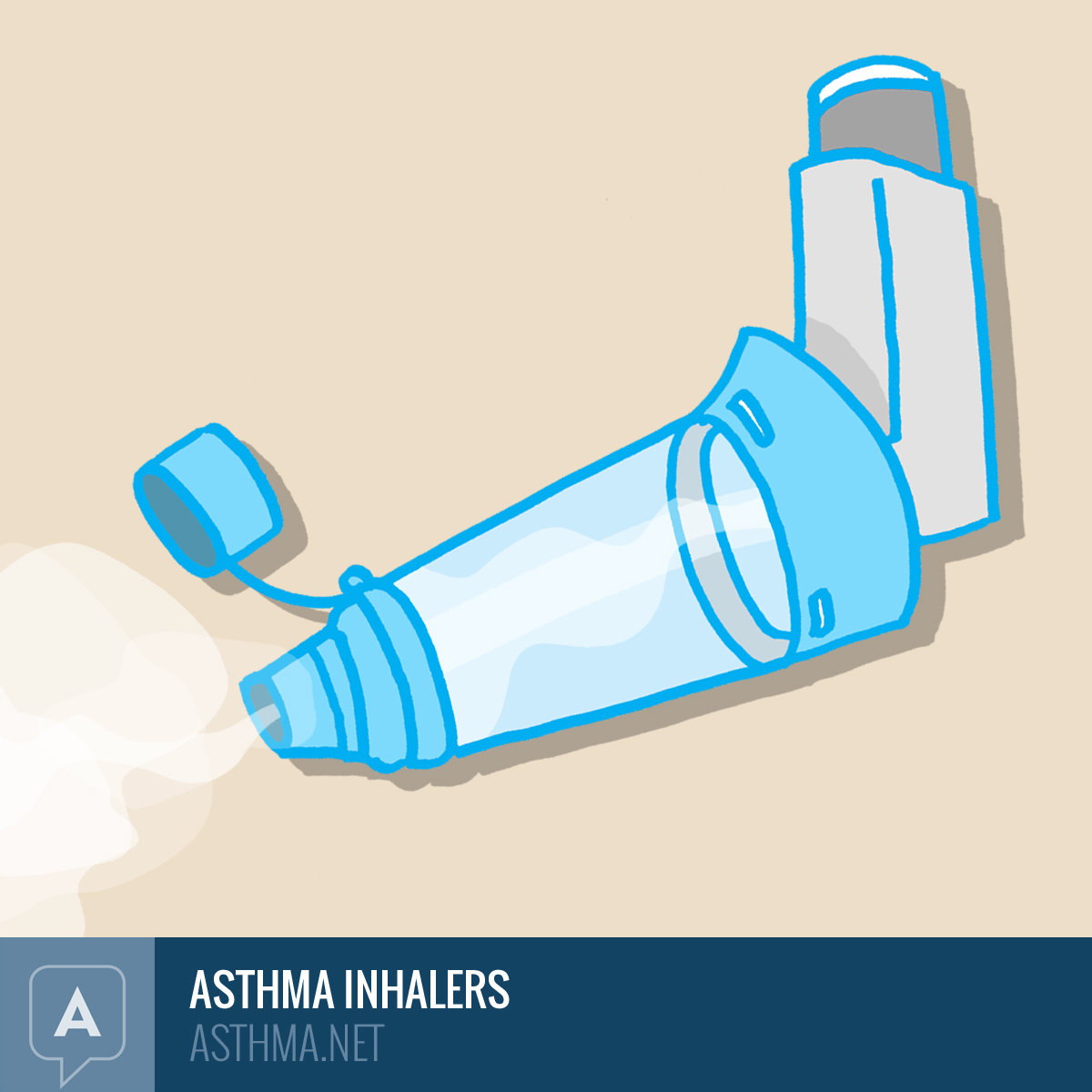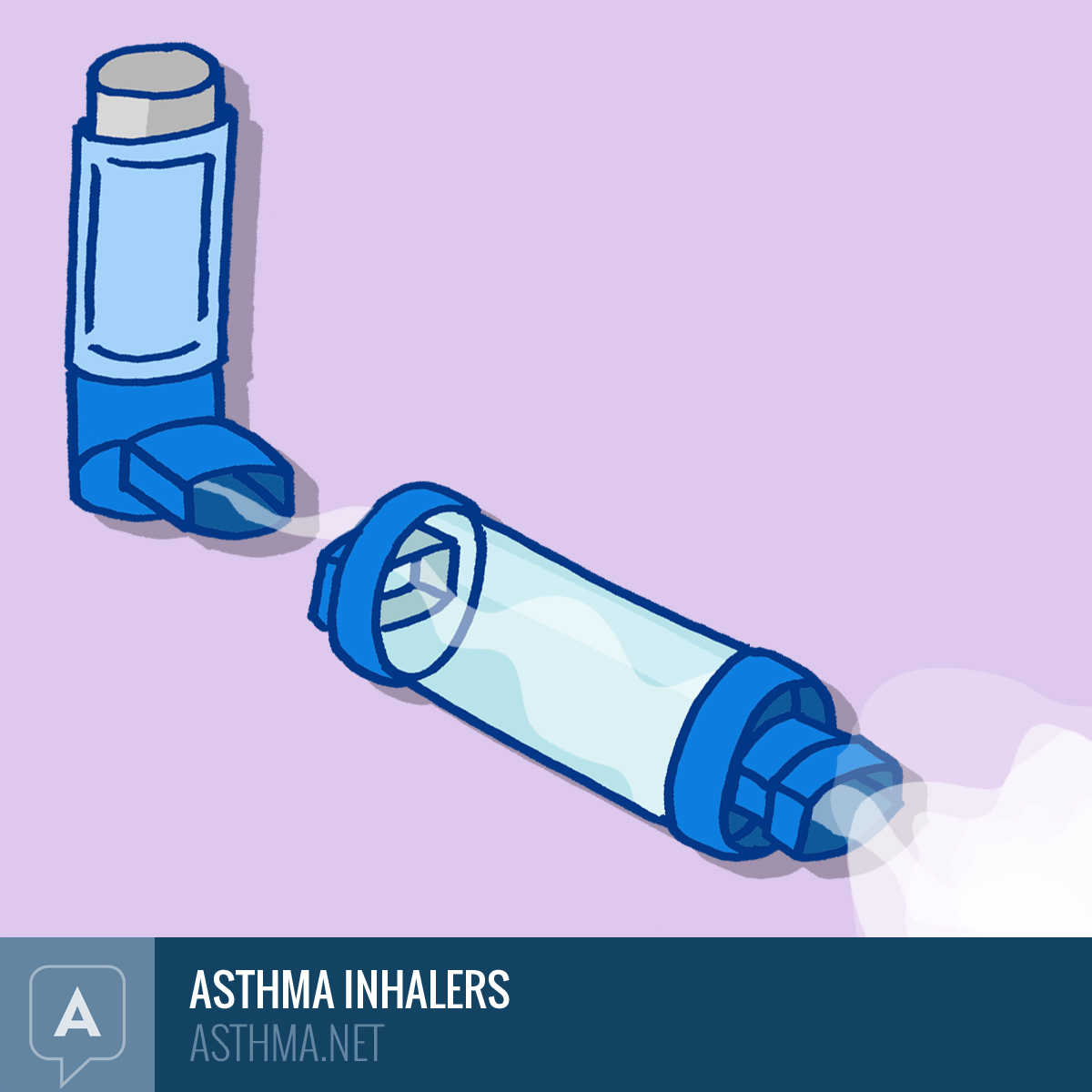How to Breathe With Asthma Without an Inhaler
Types of Asthma Inhalers
Surprisingly, 70% to 80% of patients use their inhaler incorrectly.1 There are two basic types of asthma inhalers:
- Metered dose inhalers
- Dry powder inhalers
Metered-dose inhalers can be used with a spacer or a valved holding chamber. These devices help the medication get into your lungs. Asthma medications can also be taken using a nebulizer. A nebulizer is a machine that turns the medication into a fine mist.
Each type of asthma inhaler has its own instructions for use. General tips for using your inhalers properly are below, but you should read the instructions that come with your inhaler. Ask your health care provider, nurse, or respiratory therapist to show you how to use your inhaler properly. Bring your inhaler to follow-up visits and ask them to check that you are still using it correctly. Studies have shown that people start making mistakes with their inhaler less than two months after learning how to use it!1
Asthma inhaler type: Metered-dose inhalers
Metered-dose inhalers are used for rescue medications (short-acting beta-agonists) and control medications such as long-acting beta-agonists and inhaled corticosteroids (Figure 1).2
Figure 1. Metered dose inhaler

General guidelines for using a metered-dose inhaler are:2,3
- Shake the inhaler.
- Breathe out until your lungs are empty.
- Place your mouth around the mouthpiece.
- Start inhaling, press on the canister to release one "puff" while continuing to breathe in for 3 to 5 seconds.
- Hold your breath for 10 seconds afterward.
- Rinse out your mouth with water and spit it out, especially if you are taking an inhaled corticosteroid. Rinsing helps to prevent thrush (a fungal infection in the mouth). It also reduces the amount of medication you swallow.
- If you are taking more than one "puff" of a rescue medication, wait 15 to 30 before taking the next puff. For other medications, there is no need to wait between puffs
Metered-dose inhalers can be difficult to use. It is hard to coordinate releasing the medication and breathing in. This is particularly hard for young children and elderly adults.2 If you use a valved holding chamber, you do not need to coordinate the puffing and breathing.2
Additional feature: Valved holding chamber
A valved holding chamber is a device that is placed on the mouthpiece of the metered-dose inhaler (Figure 2). It has a one-way valve that prevents you from breathing into the device. It can be used with a mouthpiece or facemask.
There are several advantages of using a valved holding chamber. You do not need to coordinate releasing the medication and breathing. You release the medication first. Then you breathe in. It also prevents medication from spraying directly into the back of your mouth and sticking there.2 Using this device can help get more medication into your lungs.
Figure 2. Metered dose inhaler with a valved holding chamber

To use the valved holding chamber with a metered dose inhaler:2,3
- Shake the inhaler.
- Remove the cap on the valved holding chamber. Look inside to make sure nothing is in the chamber.
- Place the rubber ring around the mouthpiece on the metered dose inhaler.
- Breathe out until your lungs are empty.
- Place your mouth around the mouthpiece. (Or secure the face mask.)
- Press on the canister to release one "puff" of medication.
- Within 5 seconds of releasing the medication, start to breathe in slowly. Breathe in for 3 to 5 seconds.
- Hold your breath for 10 seconds.
- Rinse out your mouth with water and spit it out, especially if you are taking an inhaled corticosteroid. Rinsing helps to prevent thrush (a fungal infection in the mouth). It also reduces the amount of medication you swallow.
Additional feature: Spacer
A spacer is a simple tube that that is placed on the mouthpiece of the metered-dose inhaler (Figure 3). Manufactured spacers can be purchased. In a pinch, a spacer can be made from a plastic bottle, a toilet paper tube, or a paper cup.2
Figure 3. Metered dose inhaler with a spacer

Using a spacer prevents the medication from getting stuck in the back of your mouth or throat.2 You must still be able to coordinate releasing the medication as you breathe in, just as you would if you used the metered-dose inhaler without a spacer.2
Asthma inhaler type: Dry powder inhaler
Dry powder inhalers are used for control medications such as long-acting beta-agonists and inhaled corticosteroids (Figure 4).2 These inhalers cannot be used with a valved holding chamber or spacer. To use these inhalers, you must be able to breathe in forcefully enough to draw the medication into the lungs.
Figure 4. Dry powder inhalers

Instructions for dry powder inhalers vary by device, so reading the instructions for your inhaler is especially important. Some product websites also have videos with a demonstration. General guidelines for using a dry powdered inhaler are:2,3
- Do not shake your inhaler.
- Load a dose according to the instructions for your device. You may need twist the inhaler or slide the cover. Each device is different.
- Turn away from the inhaler and exhale. (If you exhale into the device after loading the dose, you will lose the medication.)
- Put your mouth around the mouthpiece.
- Breathe in rapidly and deeply for 1 to 2 seconds.
- Hold your breath for 10 seconds.
- Rinse out your mouth with water and spit it out, especially if you are taking an inhaled corticosteroid. Rinsing helps to prevent thrush (a fungal infection in the mouth). It also reduces the amount of medication you swallow.
Alternative to an inhaler: Nebulizer
A nebulizer is a machine that turns the asthma medication into a fine mist. A nebulizer can be used for rescue medications and control medications.2 Nebulizing can be expensive and time-consuming.2 The machines are bulky. For these reasons, nebulized medication is mainly used for people who cannot use a metered-dose inhaler with a valve holding chamber and face mask.2 The advantage of using a nebulizer is that the person can breathe in and out like normal. The nebulizer can be used with a mouthpiece or snug-fitting face mask.2
General guidelines for using a nebulizer are:3
- Wash your hands before you start.
- Assemble the machine, tubing, medicine cup, and mouthpiece or mask.
- Pour the medication into the medication cup.
- Place your mouth around the mouthpiece. (Or fit the facemask snugly over your child's face.)
- Turn on the machine.
- Take normal breaths through your mouth.
- Continue for about 10 minutes, until the medicine cup is empty or the mist stops.
- Rinse out your mouth with water and spit it out, especially if you are taking an inhaled corticosteroid. Rinsing helps to prevent thrush (a fungal infection in the mouth). It also reduces the amount of medication you swallow.
What type of asthma inhaler do you use? Do you use a spacer or valved holding chamber with it? Let us know in the comments below!
Written by: Sarah O'Brien | Last Reviewed: October 2021.
How to Breathe With Asthma Without an Inhaler
Source: https://asthma.net/treatment/inhalers